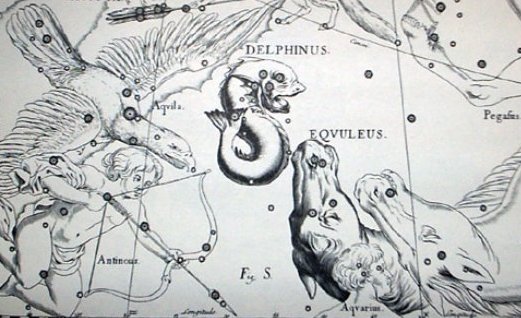A Mensis Intercalaris beginning after February 23 (where 31 + 23 = 54 or 29 + 23 = 52) would stretch for 27 days and the last 5 of them would be the last 5 days in February (Februarius). ... The ordinary year in the previous Roman calendar consisted of 12 months, for a total of 355 days. In addition, a 27-day intercalary month, the Mensis Intercalaris, was sometimes inserted between February and March. This intercalary month was formed by inserting 22 days after the first 23 or 24 days of February; the last five days of February, which counted down toward the start of March, became the last five days of Intercalaris. The net effect was to add 22 or 23 days to the year, forming an intercalary year of 377 or 378 days.
My interpretation:
From the beginning of March to the end of August (Sextilis) there were 180 calendar days. From the beginning of September to the end of December there were 118 days:
The beginning of a year could have been characterized by 5 'dark nights when Gods were born': ... Nut, whom the Greeks sometimes identified with Rhea, was goddess of the sky, but it was debatable if in historical times she was the object of a genuine cult. She was Geb's twin sister and, it was said, married him secretly and against the will of Ra. Angered, Ra had the couple brutally separated by Shu and afterwards decreed that Nut could not bear a child in any given month of any year. Thoth, Plutarch tells us, happily had pity on her. Playing draughts with the Moon, he won in the course of several games a seventy-second part of the Moon's light with which he composed five new days. As these five intercalated days did not belong to the official Egyptian calendar of three hundred and sixty days, Nut was thus able to give birth successively to five children: Osiris, Haroeris (Horus), Set, Isis and Nepthys. Accordingly the meaning of Terminalia should be the end of the old regular calendar year, because a new year would be born in the 5 following dark nights:
Glyph number Cb13-14 could allude both to 314 and to 13 * 14 = 182. In the latter case we could then deduce there should have been 2 halfyears with February 24 as the beginning of one of them and February 23 as the end of the other. Twice 3.14 is needed for a full circle. Sadachbia is γ Aquarii, where Hevelius has drawn how the right arm of Aquarius it going through the handle of the Urn (where his elbow is). In other words - this place is a cardinal point in time and it could be where the new year is about to be born.
1000 flowers or stars, when combined with 314 becomes 1314. The RA day number (in rongorongo times) of Sadachbia was 338 and 338 = 314 + 24, where 314 was Gregorian day 80 + 314 = 394:
| |||||||||||||||||||||||||||||||||||||||||||||||||||||||||||||||||||||||||||||||||||||||||||||||||||||||||||||||||||||||||||||||||||||||||||||




